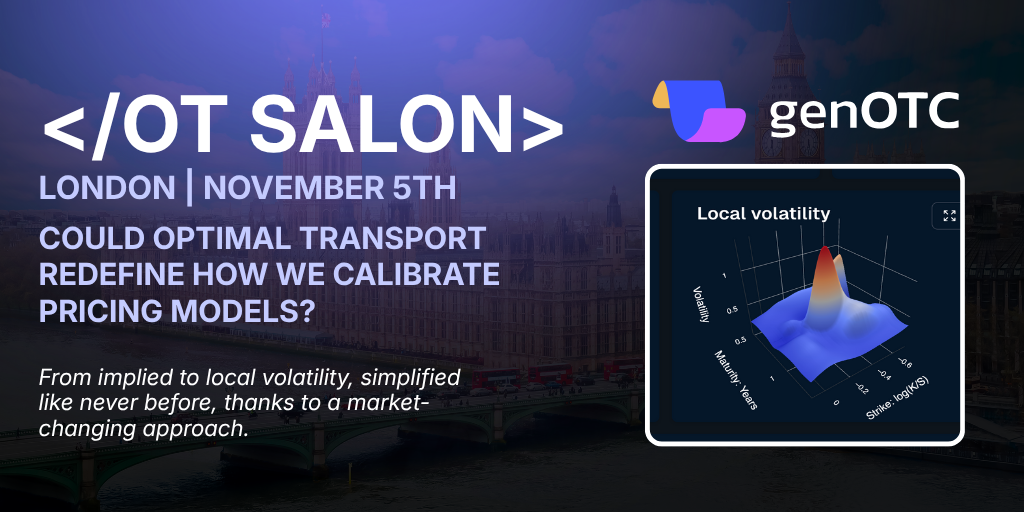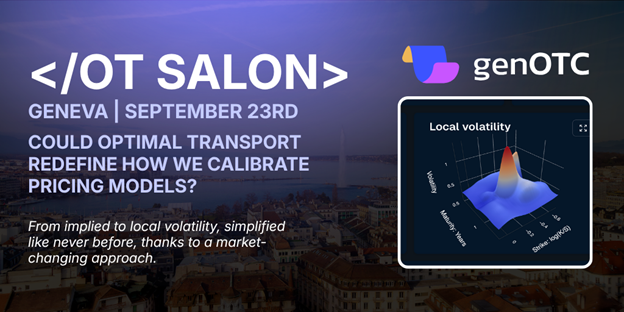
Bringing an idea from thought to reality is demanding work – yet deeply fulfilling when mathematics begins to reshape how we think about financial derivatives pricing and volatility modeling.
Just over a year ago, genOTC assembled a dedicated team to turn theory into platform – uniting mathematical research and engineering to advance volatility calibration models and quantitative finance solutions, under the guidance of Grégoire Loeper and Pierre-André Pochon.
On September 23rd, that vision came to tangible form at the first </OT Salon> in Geneva, held at the Ulysse Nardin boutique. What began as a conversation on precision in finance evolved into a demonstration of how optimal transport for finance and Swiss horology share the same values: balance, rigor, and perfection.
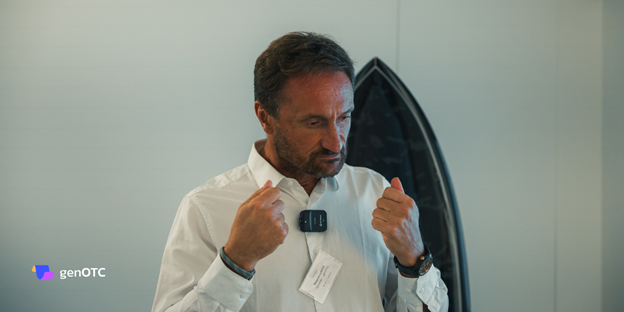
How Optimal Transport and Stochastic Volatility Models Redefine Financial Derivatives Pricing
It was a morning where the stochastic process modeling met precision engineering. The event drew a select group of professionals from financial markets, trading, quantitative research, and risk management for a deep exploration of how theory becomes code – and how precision becomes measurable.
At the heart of our salon was Grégoire Loeper, Senior Scientific Advisor at BNP Paribas and one of the world’s foremost experts in stochastic volatility modeling and Optimal Transport theory. His keynote – “From Monge (1781) to Black-Scholes-Merton (1973): Derivatives Pricing, Volatility Calibration, and Optimal Transport” – traced the intellectual journey linking classical mathematics to modern advanced pricing models.
He began with Gaspard Monge, who first formulated the Optimal Transport problem in 1781 – how to move one distribution of mass to another at minimal cost. What started as a purely mathematical curiosity evolved through the work of Kantorovich and Brenier (and notably written on by Villani) into a powerful framework with applications across physics, economics, and, more recently, finance. Loeper explained that, at its core, Optimal Transport provides a principled way to map one probability distribution onto another – exactly what financial model calibration requires.
Loeper then showed how Optimal Transport now bridges mathematical rigor and practical implementation, providing the foundation for volatility calibration models that are both stable and arbitrage-free.
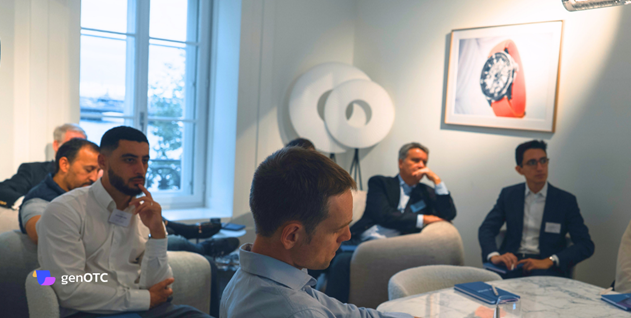
From Theory to Robust Pricing
For decades, model calibration – the process of adjusting a model’s parameters so that its outputs match observed market data – has been both essential and challenging. Traders, quants, and risk managers rely on these models for pricing derivatives, assessing volatility, and managing risk exposure. Yet calibration often involves numerical instability, heuristic shortcuts, and a constant trade-off between accuracy and speed – all of which are far from ideal for dealing with the volatility of modern financial markets.
“financial models require perfect alignment between market data and theoretical structures”
Optimal transport in finance offers a way out of this compromise. By framing calibration as an optimal mapping problem. Loeper showed how one can achieve exact, arbitrage-free, and robust calibration – with mathematical guarantees instead of approximations.
What once required a delicate balance between intuition and engineering—and, in some cases, depended on pure luck (or an eight-person quant team) for accuracy—can now be grounded in elegant theory, practical application, and streamlined resources.
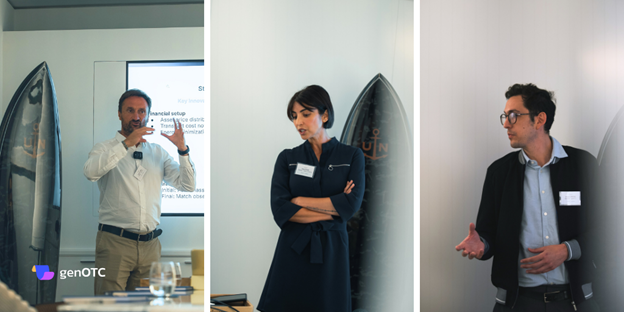
From Research to Real-World Application
The real test of any idea is its translation into practice. Guests witnessed firsthand genOTC’s next-generation platform in a live demonstration, showing how Optimal Transport has evolved from academic theory into a fully operational calibration engine. The demo showcased how the system processes market inputs, applies the mathematics of Optimal Transport, and outputs a calibrated volatility surface that is arbitrage-free, stable, and fast – a complete quantitative risk solution designed for production environments.

A Dialogue Among Professionals
Beyond the presentation, the salon stood out for the quality of exchange among attendees. We were joined by professionals from Allasso, Altitude Investment Solutions, Exergon Capital, EY Suisse, Fortune Financial Strategies, Kerius Finance, Lake Geneva Investment Partners, Nobel Capital Management, and Soft-Finance SA, and others.
Their questions and perspectives transformed the morning into a true dialogue – one that connected stochastic volatility models, risk dynamics, implementation challenges with previous providers, and the evolving landscape of quantitative risk analytics.
A shared understanding has emerged: the world of financial modeling is moving away from legacy providers of the past decade or more, toward emerging frameworks that are more transparent, accurate, and mathematically rigorous—shifting the landscape from traditional consulting models to modern SaaS solutions.
Where Historic Haute Horology Meets Groundbreaking Quantitative Finance
No reflection on the </OT Salon> would be complete without mentioning Edouard Gonnellaz of Ulysse Nardin, who delivered an inspiring presentation on Haute Horlogerie and precision craftsmanship.

He traced the maison’s history back to 1846, when Ulysse Nardin’s marine chronometers revolutionized navigation and set new standards for reliability and accuracy. Guests were given an exclusive look at the Freak collection, a line that broke convention by integrating movement into watchhands themselves –– an engineering feat that, like genOTC, redefines what precision can look like in practice.
“Just as every gear in a timepiece must align flawlessly, every variable in a volatility model must synchronize for consistency and reliability”
Edouard drew a powerful parallel: just as every gear in a timepiece must align flawlessly, every variable in a volatility model must synchronize for consistency and reliability. In both worlds, a small imperfection can propagate into a large-scale error.
Continuing the Journey: The </OT Salon> Series
The Geneva salon was only the beginning – the first in a global series exploring the intersection of mathematics, finance, and technology.
The success of this inaugural event confirmed that professionals across quantitative research, trading, and risk management are eager for a new era of robust pricing models, volatility calibration tools, and quantitative risk management software that emphasize accuracy and insight – not just brand names and big invoices.
The </OT Salon> experience continues next in Paris (November 4th) and London (November 5th), where new ideas and calibrations await. Each session will expand the conversation around Optimal Transport, volatility modeling, and stochastic finance, offering participants an opportunity to see how theory becomes application (and what it can do for you).
The Future of Precision in Quantitative Finance
Attendees can expect the same blend of rigour and human connection – a space where quants, investors, risk managers, and more, come together not just to learn, but to question, share, and shape the future of finance together.
If a centuries-old mathematical problem can revolutionize how we model volatility, then perhaps the true heart of innovation lies in connecting the past and future: letting theory meet precision, and precision meet purpose.
We look forward to continuing that journey in Paris and London, where new ideas, new calibration, and deeper volatility modeling insights await.
Our sincere thanks to Patrick Pruniaux, Manuela de Andrade, and Edouard Gonnellaz for their generous support in co-hosting this first event with us. And, of course, thank you to our guests for contributing their curiosity, expertise, and questions.
For more details:

